Starting a new chapter in the USA is an exciting adventure.
As animal lovers, we know leaving a beloved pet behind isn’t an option. Pets are part of our families, and bringing them along means your move will truly feel complete.
Of course, bringing your pet to the USA from Australia can feel overwhelming. You might be asking yourself:
- Will my pet cope with the long flight?
- What documents do I need?
- How strict are the entry requirements?
These are all common concerns. The good news is that with careful planning, patience, and expert support, you can make your pet’s journey to the USA safe, smooth, and stress-free.
Let’s jump in and discover the roadmap to follow for bringing your pet to the USA from Australia.
Pre-Travel Checklist: Essential Steps Before You Go
Before you and your pet travel to the USA, there are some vital steps to complete in Australia. These preparations are designed to protect animal health, prevent the spread of disease, and ensure smooth entry into the United States for your pet.
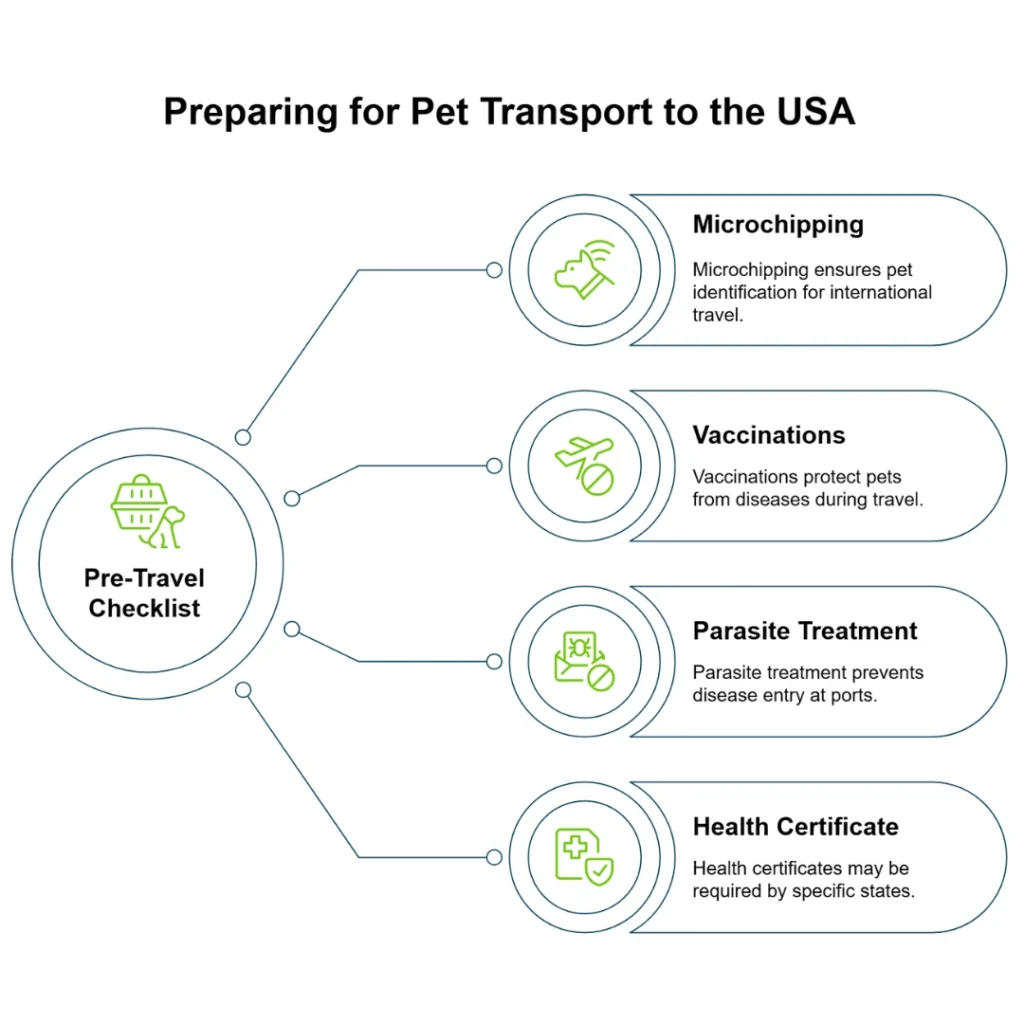
Microchipping
Every pet travelling internationally from Australia must be identifiable with a microchip. The USA requires that your pet’s microchip be ISO-compliant (ISO 11784/11785) so it can be read by scanners used worldwide.
If your pet already has a chip, ask your vet to confirm it meets the standard. If not, your pet will need to be re-microchipped.
Vaccinations
Pet vaccinations are equally critical. While Australia is rabies-free, the USA requires proof of rabies vaccination for dogs if they’ve been in a high-risk country within 6 months of travelling to the USA.
So your dog may need to get the rabies vaccination if you travelled outside Australia with them. This depends on the country you travelled to.
- The vaccination must be administered when your pet is at least 12 weeks old and should be given at least 28 days before travel (if it’s the first time getting the rabies vaccine).
- Your vet must complete the Certification of Foreign Rabies Vaccination and Microchip form. This form must be completed no more than 30 days before your dog travels to the United States.
- Dogs that need the rabies vaccination also must get a rabies titre test. If your dog doesn’t have a valid rabies titre test result, it must complete 28 days in quarantine at a CDC-registered animal care facility.
Note: Dogs that have NOT been in a high-risk rabies country (Australia is rabies-free) within 6 months of departure to the USA don’t need a rabies vaccination.
There are three further points to consider:
- We recommend getting your pet vaccinated against rabies to protect your pet, as the US does have rabies.
- The rabies vaccine is required if your pet is entering a major port in one state before transferring to another state.
- The rabies vaccination may also be required, depending on the airline your pet is flying with.
Cats don’t need proof of rabies vaccination to enter the USA. However, the Centres for Disease Control and Prevention recommends that cats get the rabies vaccination.
Additionally, the destination state or territory might have its own specific requirements for dogs and cats. For instance, Hawaii and Guam have stringent quarantine regulations for pet importation.
We also recommend keeping your pet’s core vaccinations current before travelling.
Recommended vaccinations for dogs (C5 vaccination) are:
- Distemper
- Hepatitis
- Parvovirus
- Para-influenza
- Bordetella bronchiseptica (kennel cough)
Recommended vaccinations for cats (F3 vaccination) are:
- Feline enteritis (panleukopenia or feline parvovirus)
- Feline calicivirus
- Feline herpesvirus (feline viral rhinotracheitis)
Staying on top of these will help safeguard your pet’s health, especially during international travel.
Parasite Treatment
We recommend treating dogs and cats for internal and external parasites before travelling. Although this isn’t a specific entry requirement when bringing your pet to the USA from Australia, your pet is subject to inspection at ports of entry and may be denied entry into the United States if they have evidence of a disease.
Health Certificate
The United States doesn’t specifically require a health certificate for pet import. But this depends on the state you’re travelling to.
USA Federal Pet Import Law
At the time of writing, federal law in the US states that neither pet dogs nor pet cats require a certificate of health or proof of immunisations from a veterinarian to be imported.
A CDC Dog Import Permit is required for dogs entering the US from countries considered high-risk for rabies. The CDC issues these permits on a minimal, case-by-case basis.
NOTE: The import regulations for Australia state that you do NOT need a dog import permit. But in our experience, a dog import permit is NEEDED EVERY TIME.
USA State Pet Import Law
Some states require a certificate of health from an Australian or US veterinarian before the pet can reside there. There may also be immunisation requirements, depending on the state, with state departments of health or agriculture responsible for establishing these rules.
Australian Pet Export
For pet export from Australia, an approved vet must examine your pet and confirm its fitness for travel. They’ll help you with:
- Health checks
- Valid microchipping
- Vaccinations (if required)
- Blood tests (if required)
- Parasite treatments
In the context of bringing your pet to the USA from Australia, you might think of the health certificate more as an export requirement.
Before your pet can fly, they must pass a final health check to confirm they’re fit for travel and meet the USA’s federal or state requirements.
Usually, a Dogtainers vet would do this final health check if you’re using our pet transport services. Our vets are experienced with this process and know exactly what paperwork is required.
If you get this check done by your regular registered vet, it’s crucial that your vet knows the process and it’s done correctly. The paperwork can be complicated, and every document must be correct.
Any mistakes can end up being very costly for you.
If everything is in order, the vet will issue a Veterinary Health Certificate, which is essential for your export permit application.
We recommend booking these appointments well in advance when bringing your pet to the USA from Australia.
Crate Training for a Smooth Journey
Preparing your pet for a smooth international journey on a long flight starts with crate training. We always recommend crate training to travelling pet parents (for flights of any duration).
The best thing for your pet is to start crate training as early as possible. That way, they get time to acclimate to the crate and develop positive associations.
Even the most anxious pets can feel safe and secure in their travel crate with time and patience. They start to relax in the crate, the beginnings of a stress-free journey.
Here are 5 tips to follow.
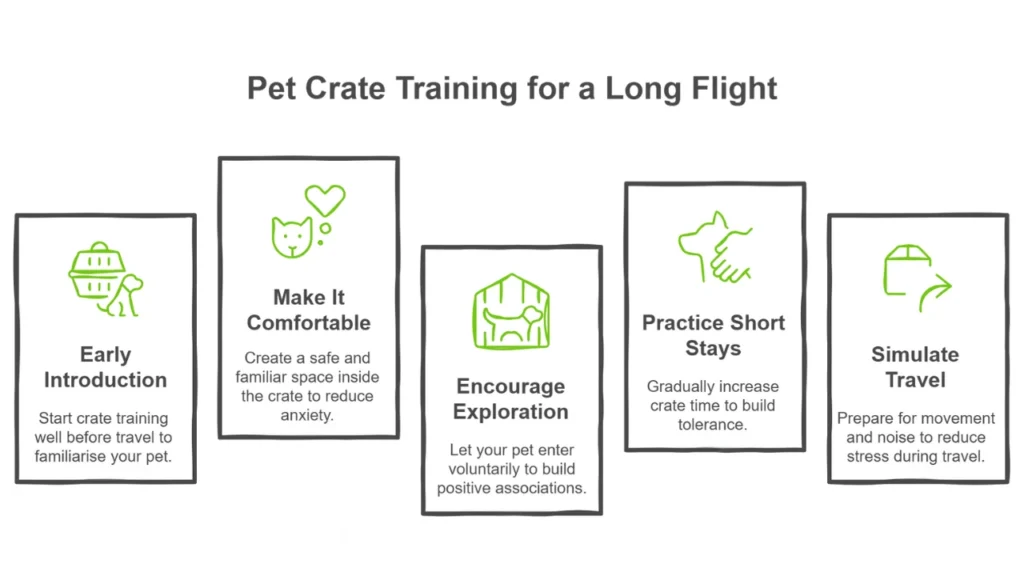
Starting Crate Training Early
Don’t think of crate training as a last-minute task. Our experts recommend starting the process at least 4–6 weeks before your departure date.
For pets that have never travelled in a crate or are prone to anxiety, start even earlier.
- Begin by simply introducing the crate into your home as a neutral or positive space.
- Avoid forcing your pet inside and let them explore at their own pace to build trust and confidence in this new space.
- Place the crate in a commonly used area of your home so your pet becomes accustomed to seeing and smelling it regularly.
Creating a Safe, Familiar Space Inside
Make the crate feel like a cosy retreat, not a punishment or prison. You want your pet to have a positive association and feel comfortable.
Add a blanket, T-shirt, or toy that smells familiar to offer emotional reassurance during crate training. Familiar scents are incredibly soothing for pets in unfamiliar environments.
Encouraging Exploration
Leave the door open and allow your pet to explore the crate on their own. Tossing in a few treats or feeding them meals just inside or near the entrance can encourage your pet to explore.
Use positive reinforcement such as praise, pats, and rewards each time they interact with the crate. Creating a strong, positive association promotes security rather than stress.
Voluntary exploration fosters calm and confident behaviour later when time in the crate becomes mandatory for travel.
Practising Short Stays
Begin closing the door for short periods while your pet is inside once they’re comfortable entering and exiting the crate. Stay nearby at first and offer reassurance through voice or visibility.
- Gradually increase the timeframe, from a few minutes to a few hours, so your pet becomes comfortable in the crate for longer.
- Try keeping them occupied with treats, chew toys or puzzle feeders.
- Practice daily for the best results, especially in the weeks leading up to your flight.
- Over time, your pet should learn that being in the crate is safe, even when you’re not within view.
Simulating Travel Conditions
Simulate the real thing once your pet is completely comfortable in the crate.
- Carry the crate gently around the house.
- Take short car rides to mimic the sensations of transport.
- Place the crate in different rooms or environments to simulate changes in light, sound, and smell.
- Use a recording of plane sounds during crate time to help them adapt to flight noise.
This type of desensitisation can make a huge difference on travel day when the environment will be unfamiliar and potentially overwhelming.
Arrival in the USA: What to Expect
After a long flight, it’s natural to feel anxious about what happens next. Here’s a snapshot of what to expect.
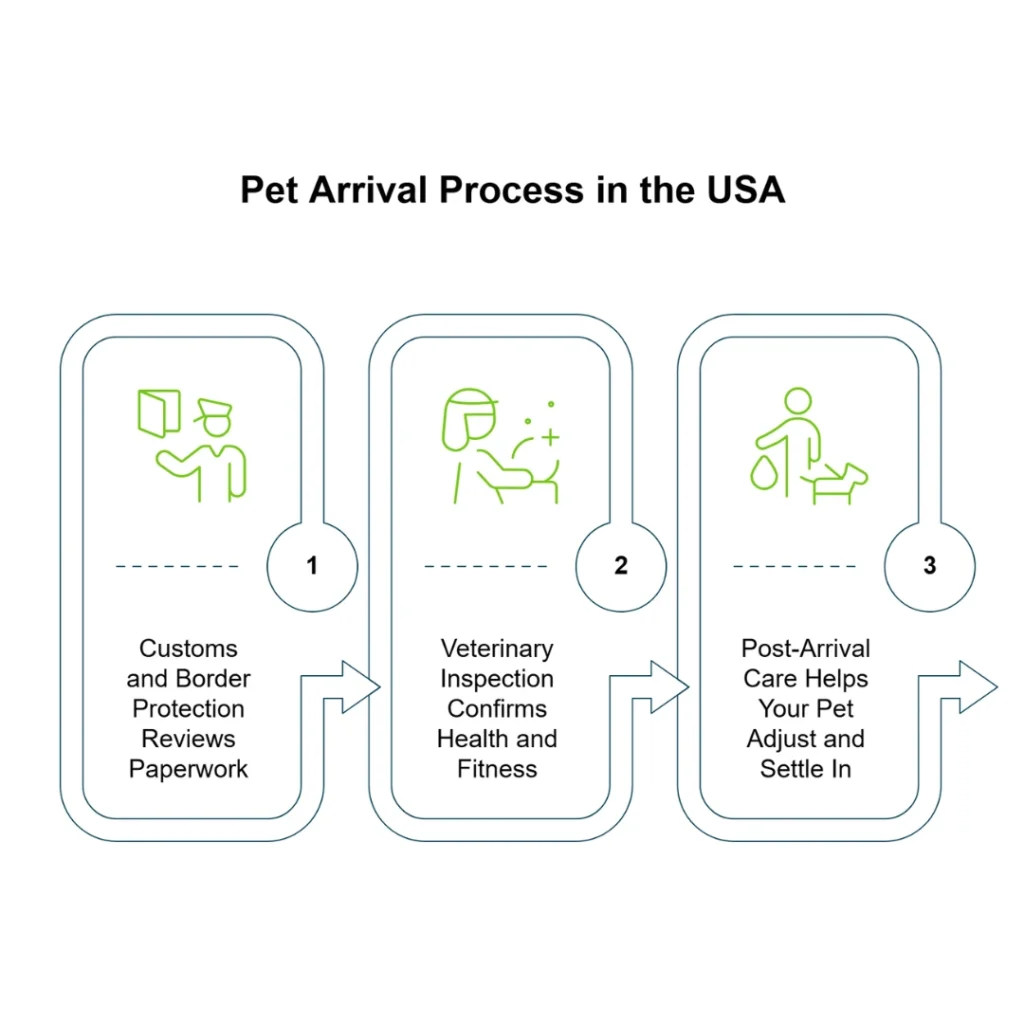
Customs and Border Protection
Upon arrival in the USA, Customs and Border Protection (CBP) checks your pet’s documentation, including microchip details and vaccination records (if applicable). Officers will review your paperwork to ensure everything meets entry requirements.
In most cases, your pet won’t require quarantine if the documents are accurate and complete. But quarantine may be necessary if you’re arriving in Hawaii or Guam.
Veterinary Inspection Process
At the port of entry, an official veterinarian performs a basic health check to confirm your pet appears fit and healthy. This check helps prevent the spread of diseases and ensures the welfare of animals entering the country.
If any documents are missing or incomplete, there’s a risk of delays or temporary holding until the situation is resolved. Having extra copies of every document can prevent unnecessary stress.
Post-Arrival Care
Once you’ve cleared customs, it’s time to help your pet adjust. The flight and new surroundings can be disorienting, so give them plenty of water and a quiet space to rest.
Pets typically adjust within a few days, depending on their personality. Dogs and cats may adapt differently.
Finding a local veterinarian soon after arrival is a smart move. They can confirm your pet’s health, update any region-specific vaccinations, and discuss ongoing parasite prevention.
Even if your pet seems fine, a quick check-up offers peace of mind. Establishing a trusted vet relationship in your new community is a bonus.
Bringing Your Pet to the USA from Australia with Dogtainers
Who says moving to the USA from Australia with your pet has to be stressful? With Dogtainers, our experts help you every step of the way.
We can guide you through everything, from advising you on entry requirements to arranging vet visits. You don’t have to go through the process alone.
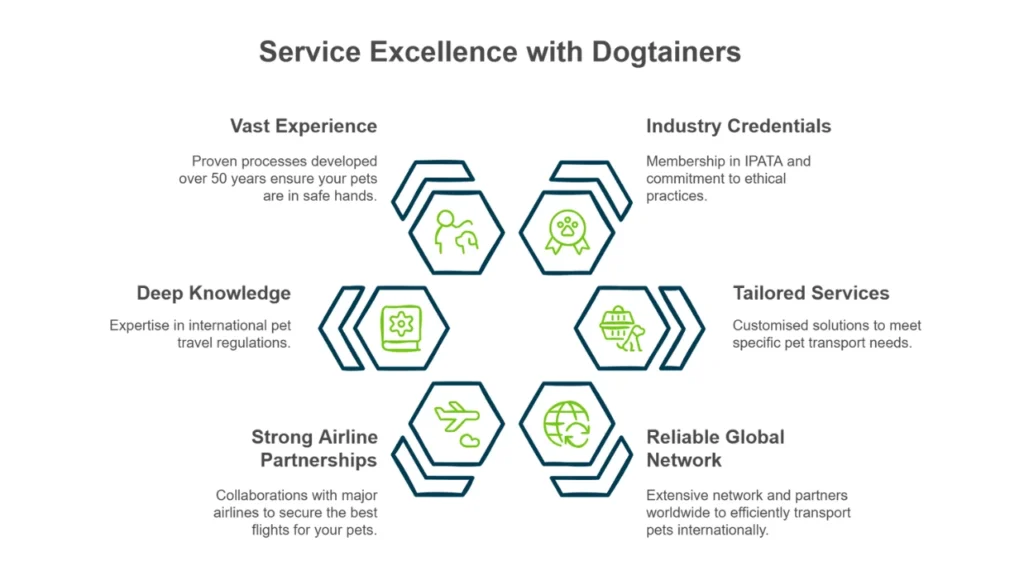
Our experts have been helping pet owners like you with international pet transport for over 50 years. We’re Australia’s oldest and most reliable pet transport company with:
- Vast experience
- Industry credentials
- Tailored services
- Reliable global networks
- Strong airline partnerships
- Deep regulatory knowledge
Conclusion
Moving with your pet to the USA from Australia takes careful preparation. But the process doesn’t have to be overwhelming.
With the right planning and expert help, travelling with your pet can be as stress-free as possible.
The main steps to consider are microchipping, rabies vaccination (if needed), recommended treatments, and health checks for export.
We recommend starting the process at least three months before departure when bringing your pet to the USA from Australia. This gives you plenty of time to organise your pet’s transport.
We’re here to make your international pet travel experience safe, smooth, and stress-free.
Get your quote today for relocating your pet to the USA from Australia.

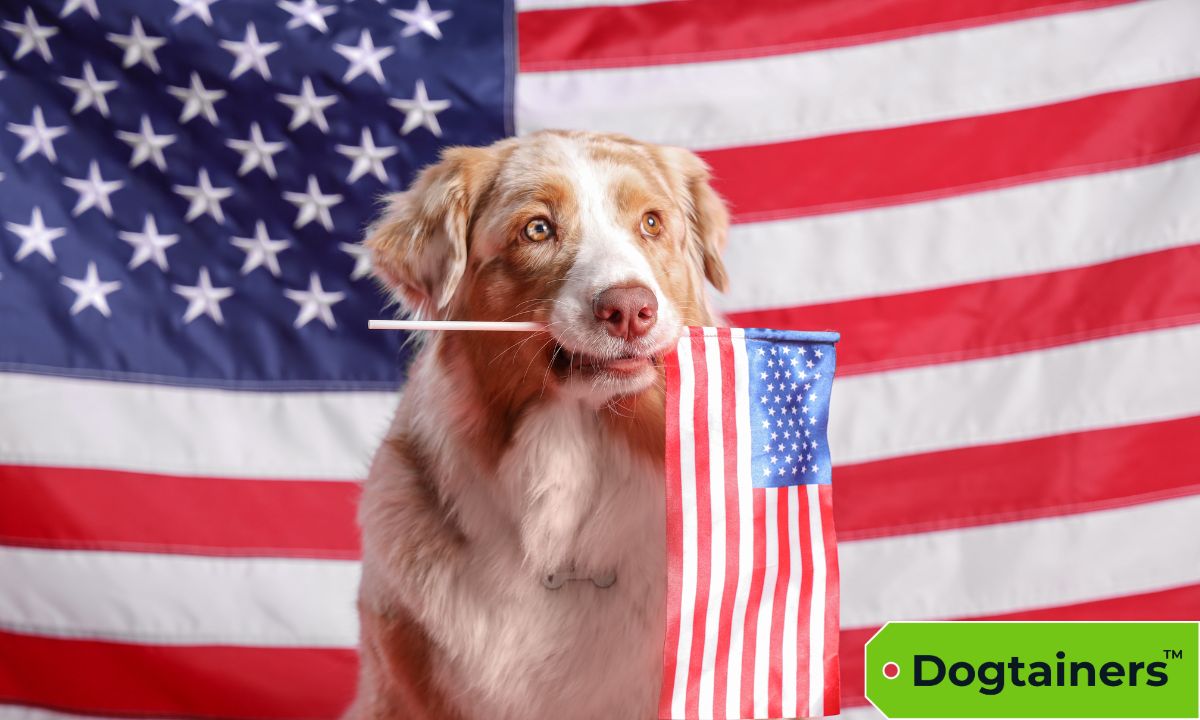
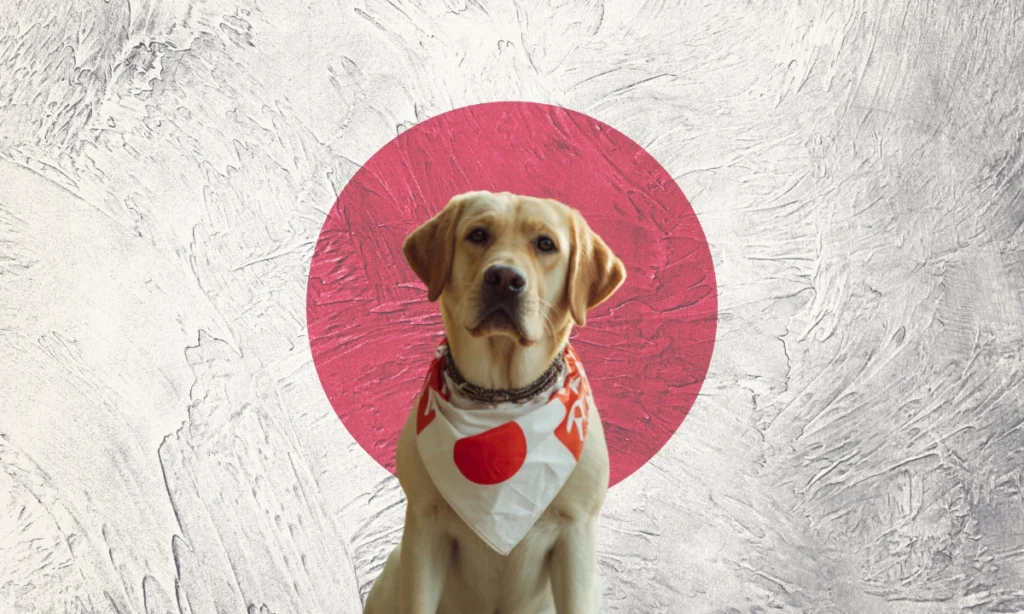
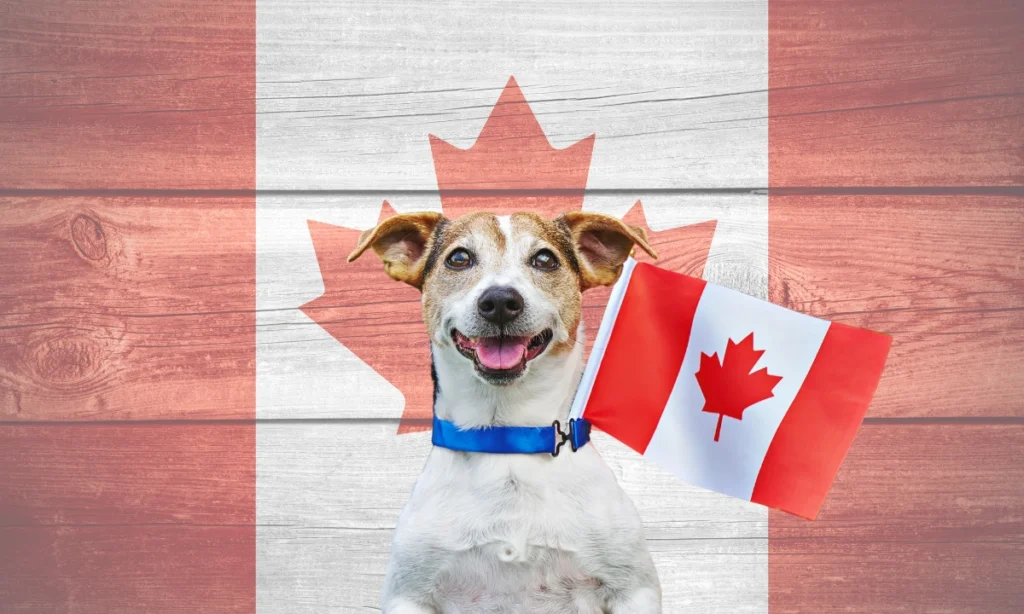
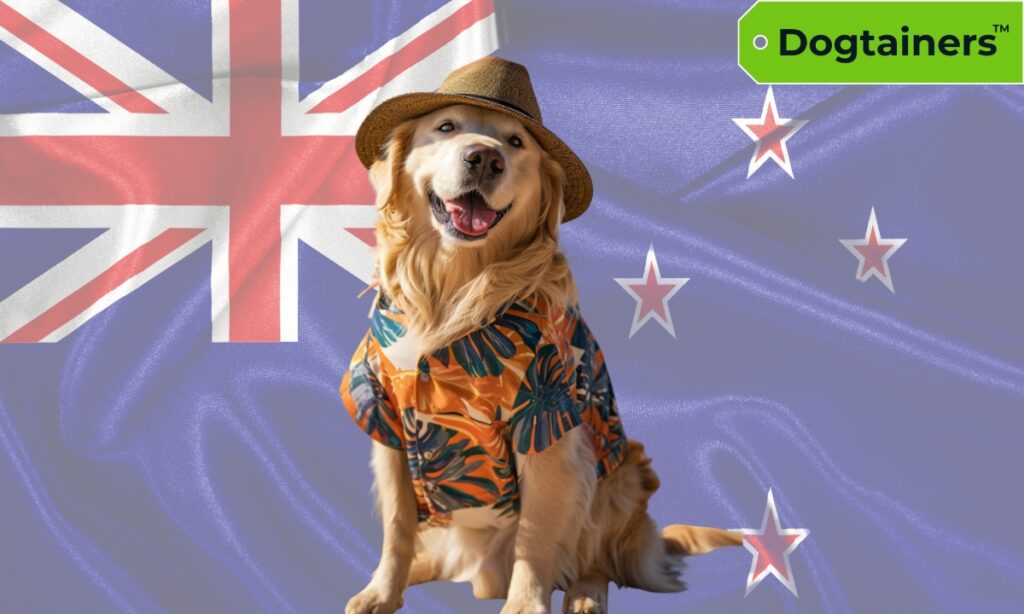
Share this article